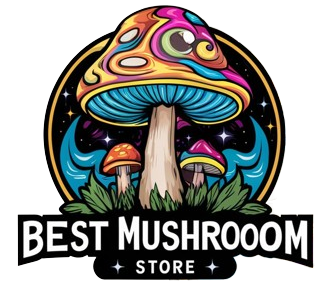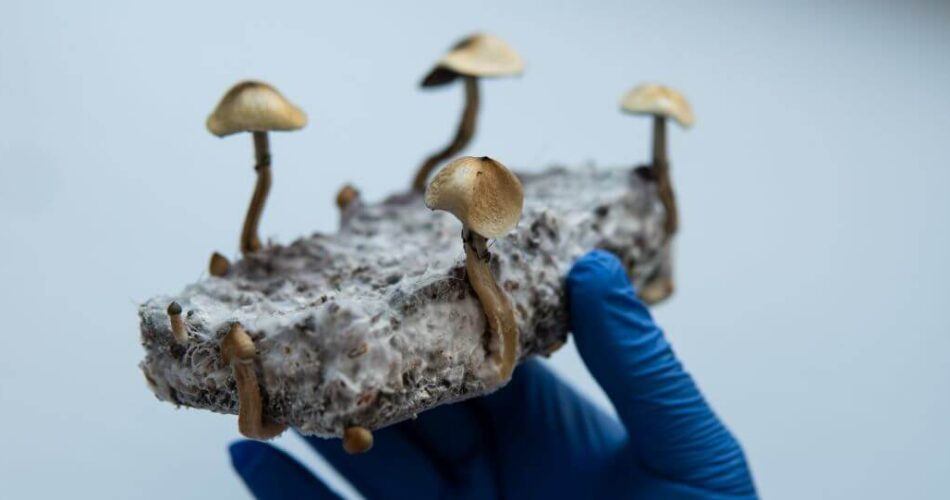When most people think of magic mushrooms, they think of Psilocybe cubensis, the most common variety. But there are many other types of psilocybin mushrooms, and one of the most interesting is Psilocybe tampanensis.
Psilocybe tampanensis has a long history and a unique appearance. It’s also said to have some powerful effects. Learn more about this amazing fungus in today’s post.
History of the Psilocybe Tampanensis
The Psilocybe tampanensis is a psychedelic mushroom that is native to Florida, and is also found in other parts of the southeastern United States. This mushroom has been used by Native Americans for centuries, and is known for its hallucinogenic properties. The active ingredient in this mushroom is psilocybin, which is a psychoactive compound that can cause hallucinations, changes in perception, and altered states of consciousness.
This fungus is thought to have first been used by the Seminole tribe of Native Americans in Florida. It was then introduced to other tribes in the area, and eventually spread to other parts of the country. The exact date of this introduction is not known, but it is thought to have occurred sometime between 1000 and 1500 AD.
The Psilocybe tampanensis was first noticed by a European explorer in 1640. This mushroom was then brought back to Europe, where it quickly became popular among the upper class.
This mushroom has been used in various religious and spiritual ceremonies by Native Americans for centuries. It is known to induce altered states of consciousness, and has been used in healing rituals and shamanic practices. It is also known to be a powerful aphrodisiac, and has been used in many sexual ceremonies.
Psilocybe Tampanensis – Other Names
Psilocybe tampanensis was described by a famous mycologist Steven Pollock in 1978. Other names for this species include “blue mystic,” “gulf coast strain,” and “tampa cubensis.” This psychoactive mushroom is native to Florida, specifically the Tampa Bay area. It has a long history of use by indigenous peoples in the region for ceremonial and spiritual purposes. It is also known as a philosopher’s stone mushroom due to its ability to induce spiritual and mystical experiences.
Psilocybe Tampanensis: Identification, Morphology
P. tampanensis is a small to medium-sized specimen, with a cap that is typically 2-5 cm in diameter. The cap is convex to slightly flattened in shape, and is reddish brown to golden brown in color. The gills are attached to the stem, and are pale gray to white in color. The stem is typically 4-7 cm in height, and is whitish to yellowish in color. The mushroom spores are brown to dark, and the spore print is dark purple.
It typically fruits during the summer months, although they have been known to fruit year round in some climates. They can be found growing on decomposing wood, in gardens, or on grassy areas.
This species is fairly easy to cultivate, and has a wide range of potential substrates. It can be cultivated on composted manure, straw, or even coffee grounds. Psilocybe tampanensis typically fruits within 2-4 weeks of inoculation.
This mushroom produce sclerotia (truffles), which are underground fruiting bodies. The caps and stipes of the fruit bodies are brown to reddish-brown, and the gills are dark purple-brown.
Psilocybe Tampanensis: Habitat
P. tampanensis is a mushroom that has been found in the Tampa area of Florida, as well as in some other parts of the southeastern United States. This mushroom is a member of the Psilocybe genus, and it contains the psychoactive compounds. It has a relatively long history of use by indigenous people in the area, and it is still used by some people today.
This mushroom grows in sandy soils, and it is often found in disturbed areas such as lawns, gardens, and roadsides. It has a brown to reddish-brown cap, and the stipe is usually white or pale yellow. This shroom typically fruits in the spring and fall.
Psilocybe Tampanensis – Similar Mushroom Species
P. tampanensis is often confused with other psilocybin-containing mushrooms, such as Psilocybe cubensis and Psilocybe mexicana. These species share many similarities, including their habitat (tropical and subtropical regions), appearance (small and brown), and hallucinogenic effects.
However, there are some key differences between these species. P. tampanensis is more potent than P. cubensis, with a greater concentration of psilocin and psilocybin. Additionally, P. tampanensis produces a more intense visual experience, with colors appearing more vibrant and patterns becoming more pronounced. Lastly, P. tampanensis has a shorter duration of action than P. cubensis, with the effects typically lasting 2-4 hours as opposed to 6-8 hours.
While Psilocybe tampanensis is sometimes confused with Psilocybe mexicana, these two species are actually quite different. P. mexicana is much less potent, with lower levels of active compounds. Additionally, the effects of Psilocybe mexicana are shorter in duration, typically lasting only 1-2 hours.
Psilocybe Tampanensis – Psilocybin Contain, Magic Truffles
Psilocybe tampanensis is a psychedelic shroom that contains the psychoactive compounds psilocybin and psilocin. It is a naturally occurring hallucinogenic compound found in certain types of mushrooms, including P. tampanensis. When consumed, it produces powerful hallucinogenic effects. In general, the effects include euphoria, visual and mental hallucinations, changes in perception, a distorted sense of time, and spiritual experiences. These effects depend on the dose of the drug, which is relatively small. Ingestion of hallucinogenic shrooms can also cause nausea and vomiting.
Psilocybe Tampanensis is used to produce tampanensis magic truffles and grow kits. This is a very potent strain that contains high levels of hallucinogenic compounds. It produces psychedelic effects when consumed. The effects are similar to those produced by other hallucinogens, such as LSD and mescaline.
Is Psilocybe Tampanensis Legal?
No, Psilocybe tampanensis is not currently legal in the United States. This shroom is classified as a Schedule I drug, which means that it has a high potential for abuse and is not currently accepted for medical use. If you are caught with this mushroom, you could face serious penalties.
Remember that every mushroom collected in the wild can be dangerous to your health if not identified correctly.
Similar Posts:
- Psilocybe Muliercula: Discover a Rare and Potent Magic Mushroom
- Psilocybe Liniformans Var. Americana: Mushrooms Native to the USA
- Psilocybe Subaeruginosa: Magic Mushroom From Australia. Spore Prints, Cultivation, Psilocybin Content
- Psilocybe Caerulipes – Description of a Magic Mushroom, Its Potency and Habitat
- Psilocybe Baeocystis – Unusual Psilocybin Species. Identification, Potency & Characteristics
- Psilocybe Ovoideocystidiata: a Psychedelic Mushroom Description
- Psilocybe Subcaerulipes: A Japanese Mushroom That Contains Psilocybin. History & Morphology of the Species





